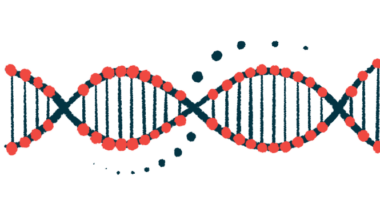Mutation tied to Fabry disease in woman with kidney disease
52-year-old woman was the sole family member with disease-causing variant

A mutation in the GLA gene associated with Fabry disease was found by Italian researchers in a woman with end-stage kidney disease, according to a case report study.
The 52-year-old woman was the sole family member with the disease-causing variant, meaning it was a de novo variant that wasn’t inherited from her parents. Her diagnosis occurred later in life.
“Similar situations have not been described in the literature for this pathogenic variant, and it represents an important case of inter- and intrafamilial variability in patients with Fabry disease,” the researchers wrote in “Case report: De novo mutation of a-galactosidase A in a female patient with end-stage renal disease: report of a case of late diagnosis of Anderson–Fabry disease,” which was published in Frontiers in Genetics. “Early identification of these conditions is essential to promptly start therapy and avoid the onset of organ complications,” they said.
Fabry disease is caused by mutations in X chromosome’s GLA gene, which provides instructions for producing the alpha-galactosidase A (Gal A) enzyme. These mutations typically affect the activity of Gal A, leading to fat molecules — mainly globotriaosylceramide (Gb3) and lyso-Gb3 — accumulating in tissues and organs, including the heart, kidneys, and nervous system. More than 800 mutations associated with Fabry disease have been reported so far.
A GLA mutation
Researchers in Italy described a woman undergoing dialysis for end-stage kidney disease, and had other complications, who carried a GLA mutation likely associated with classic Fabry disease.
The 52-year-old woman had an intellectual disability and hearing loss caused by a neonatal hypoxic ischemic encephalopathy, which occurs during birth or shortly afterward when there is a lack of oxygen (hypoxia) and reduced blood flow, or ischemia, to the brain.
She also had gastrointestinal symptoms since childhood, including diarrhea, abdominal pain, and changes in sensations in her hands and feet – tingling, burning, or numbness. Over the last seven years, the woman had developed chronic kidney disease that required dialysis.
After the more frequent causes of kidney disease were ruled out, she was referred to the researchers who performed a genetic sequence analysis of the GLA gene, which revealed a mutation (c.947dupT) in the sixth exon that led to a change in Gal A enzyme. An exon is the coding sequence of a gene that provides instructions to make proteins.
The diagnosis of Fabry disease was made based on the genetic alteration and the fact that the variant was previously associated with the disease. The alteration wasn’t detected in other family members, who were healthy.
The woman had low Gal A activity in the blood at 6.6 nanomoles per milliliter per hour (nmol/mL/hour). Healthy values range from 3 to 14 nmol/h/mL. She also had abnormal protein levels in a 24-hour blood test, indicative of kidney disease. Electrocardiogram and echocardiography tests confirmed an enlarged left heart ventricle muscle.
A skin biopsy indicated small fiber neuropathy, that is, damaged skin nerves, and abnormal Gb3 deposits in skin vessels. She also had high lyso-Gb3 levels in the blood at 11.45 nanomoles per liter (nmol/L). A normal range is under 2.3 nmol/L.
The woman was treated intravenously with Fabrazyme (agalsidase beta) once every two weeks and her pain and tingling were also treated. She complained of burning or electric-shock pain, needle sensations, and extreme sensitivity to touch, all from neuropathy.
A few months before her diagnosis, the woman’s symptoms became severe and persistent, especially during rest and at night. She was treated with antidepressants and with medications for neuropathic pain.
“The detection of a de novo mutation in just one family member is a rare occurrence that highlights the importance of genetic counseling, early diagnosis, and, finally, extended genetic screening for Fabry disease in patients affected by [kidney] disease of unknown etiology,” the researchers wrote.







